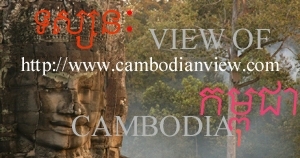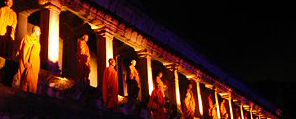


The Four Noble Truths BACK
1. The Truth of Suffering = Dukkha
Programme one - Stephen Batchelor(bbc)
============================================
We live in an unstable world. By the time I reach the end of this sentence, the Milky Way will have travelled one hundred and twenty miles closer to the centre of its galaxy cluster, the Earth twenty miles in its orbit around the sun, while your brain will have generated millions of firing patterns. We inhabit the universe of relentless motion and flux, in which everything from an idle thought to a solar system comes into being, then hastens to its end. While this way of seeing things might induce a sense of religious awe, it can also send a chill of terror through one. One is unsettled by the sheer groundlessness and vastness of nature's unfolding.
What can I depend on here? What can I trust? This way of looking at human existence illustrates what Buddhists call 'The Suffering of Change'. The instability and contingency of things provoke a brooding disquiet that hovers in the background of our lives. We know that our presence on this Earth is not as secure as we would like it to be, but we tend to ignore this fact and lose ourselves in the more pressing issues at hand. Paradoxically, though, to confront such inescapable truths may turn out to enrich our existence, rather than undermine it.
I did not choose to be here, but now I cannot accept the thought of not being here. However certain I feel about the necessity of my existence, the only certainty I face is that this seemingly necessary being will perish, this heart will cease pumping blood, these lungs will cease drawing air, these neurons will cease firing in my brain, my body will rot or be consumed by fire, and within a matter of years, I will linger on only as a memory in the fading minds of those who once knew me.
This is a place where things happen that we don't want to happen. Cars skid on ice and swerve off roads into trees, instead of reaching their destination. Your rival wins the hand of the person you love. Floods and earthquakes destroy in moments what years of labour have created. At times, I feel hemmed in, inwardly subjected to the vaguaries of a fragile body and fickle mind, outwardly overwhelmed by the demands of a suffering world. A contradictoriness penetrates to the very core of what I feel to be my true and independent self. 'I yearn to be free of pain,' wrote the 8th Century Indian Buddhist monk, Shanti Dayvah, but rush straight into it. 'I long for happiness, but trample on it.' This observation is disquieting. Shanti Dayvah is not talking about an occasional moral lapse that could be corrected by fear of punishment or a timely boost of righteousness. He is pointing to a conflict that seems knit into the very fabric of our existence.
According to legend, Siddartha Gautama, the prince who was to become Buddha, was raised in palaces, where his attention was constantly diverted from the contingency, transience and unreliability of his existence. Then one day, he made the mistake of asking his father to let him see the world outside the palace walls. Despite the King's efforts to ensure that no distressing sights would spoil the young man's enjoyment, Siddartha chanced upon a person crippled with age, another ridden with disease, and a corpse. For the first time, he was struck by the impermanent, finite and tragic nature of human life. He realised that once born on this Earth, one will inevitably age, fall ill, suffer accidents and die.
A privileged upbringing in a prosperous, 21st Century society bears striking parallels to that of Prince Siddartha in North India five hundred years Before Christ. Our attention, too, is constantly diverted, this time by a bombardment of information that keeps the desires and fears that hold us captive in a constant state of agitation. We each aspire to a virtual palace that promises the fulfilment of our longings and the elimination of our pain. Sickness, ageing and death are likewise concealed from us, where they're hidden away inside hospitals, homes and morgues, or obscured by cosmetic surgery or an undertaker's art. Ill, decrepit and dead bodies are kept out of sight. While we might ruefully reflect from time to time on this web of deceptions that surrounds us, it is rarely enough to prompt a radical change in how we live, but this is the effect it had on Siddartha Gautama. The contradiction between his pursuit of pleasure and power and his awareness of the contingency, transience and anguish of life became intolerable for the young man. These uncensored glimpses of existence startled and perplexed him. Rather than regarding his life as a compilation of more or less interesting facts, it became a pressing question for him. No longer could he rely on his commonsense convictions to justify his existence on this earth. For the certainty of being Siddartha Gautama, son of King Shudu Danah and heir to the throne, was a hopelessly inadequate answer to the question posed by the sheer fact of being born and having to die.
To stay with this question, rather than getting diverted again by the more manageable problems of daily existence is almost impossibly demanding. A Zen Buddhist meditation manual asks that one pose this question through the pores of one's skin and with the marrow of one's bones. Siddarta's perplexity was not a philosophical or religious curiosity. It gripped him in such a way that nothing else seemed to matter until he had resolved it. When he returned to his palaces, he felt, in the words of his Sanskrit biographer, Ashfa Gosha, 'like a lion pierced deeply in the heart by an arrow.' Late one night, when his courtiers and courtesans were asleep, he slipped away into the surrounding forest, discarded his royal garb and assumed the life of a wandering ascetic. Six years later, after much effort and disappointment, in what seems like a final act of desperation, he vowed to sit beneath a tree and not stand up again until he had resolved his dilemma. Seven days later, he experienced an awakening, often translated as 'enlightenment', that at last provided an adequate response to the question posed by the riddle of birth, sickness, ageing and death. He thus came to be known as 'Buddha', which simply means 'Awakened One'.
For the next forty years, he taught his followers how to reach awakening through cultivating a middle way of ethical integrity, meditative stillness and penetrating inquiry. This awakening was not, however, a shattering, mystical revelation of the Truth with a capital 'T'. When asked what he had understood, Gautama would characteristically reply: "Suffering and the cessation of suffering." His awakening entailed coming to terms with the complex of four inter-related Truths: suffering, its origins, its cessation and the path that leads to that cessation. "It was not until I grasped these four Truths," declared Gautama, that I could consider myself fully awake. These Truths revealed to him both the nature of the human dilemma, as well as the possibility of its resolution. As a response to the questions raised by the contingency, transience and painfulness of life, his awakening illuminated the nature of suffering as vividly as it did the way to resolve it. The path that brings such anguish to an end, he discovered, starts by gazing unflinchingly into the heart of suffering itself.
Rather than a set of propositions in which to believe, Buddha presented these four truths as injunctions upon which to act. Each truth demands its own corresponding response. For example, suffering, the first Truth, demands to be fully known. Rather than spending our lives trying to avoid and ignore the underlying instability and unease of our condition, Buddha suggests instead that one calmly focus attention on this aspect of existence in a sustained and reflective manner. In this way, we begin to shift attention away from an obsession with self and contemplate instead the fluctuating matrix of contingencies from which this play of me and mine continuously emerges and vanishes.
Commonsense suggests that meditating on the transience of life would only make one morbid and depressed. In contrast, Buddha compared sickness, ageing and death to divine messengers that open our eyes to truths that can liberate us from anguish. Our lives become flat and depressed, he maintained, because we refuse to heed their message and remain stubbornly committed to sustaining the fiction of being permanent and necessary. By accepting our mortality and contingency, though, we may find ourselves infused by the sheer exuberant astonishment of being alive now in this moment. Understanding and embracing our condition in this way is the first step towards releasing the attachment we have to being a fixed, unchanging ego.
This process of coming to terms with existential unease is comparable to following a course of medical treatment. Buddha referred to himself as a healer and his teachings as a course of treatment. What he taught was intended to be theraputic, rather than consoling. He wanted people to apply his teachings in a way that made a difference to their lives. The path he described offered no miracles. It was up to each person to work out their own salvation with diligence.
To illustrate his approach, Buddha told the story of a man who is seriously wounded by an arrow, but says to his friends: "I will not let the surgeon pull out the arrow until I know the name and clan of the man who shot it, whether his bow was a longbow or a crossbow, whether the arrow was hoof-tipped, curved or barbed." This absurdly inappropriate demand is, however, no different from someone else saying: "I will not follow the path until Buddha declares to me whether the world is finite or infinite, whether the soul is the same as, or different from, the body, whether an awaked one continues or ceases to exist after death."
The pursuit of such metaphysical questions is just a high-minded distraction from the more pressing issue of confronting the dilemma of one's existence here and now. It really doesn't matter who shot the arrow or how it got there. The crucial thing is to recognise that it is there. We might then realise that a great deal of our suffering stems from a tight, existential grip, embedded like an arrow in the core of ourselves. This grip is so intimately familiar, that for most of the time, we fail to notice it. It holds us in a kind of spasm that solidifies our experience in such a way that everything, including ourself appears inert, opaque and lifeless. Only after a close shave in a car accident or when a friend is diagnosed with a terminal disease, do we feel its cold, implacable constriction. The task, however, is to find a way to release this grip, thereby removing the arrow, and that for Buddhists is called 'Nirvana'.
Copyright ©August, 2003 Khmer-Canadian Buddhist Cultural Centre.
All Rights Reserved (unless otherwise stated).
Started: Wed, August 13, B.E.2547,A.D.2003, Last Updated: April 5, 2547/2004